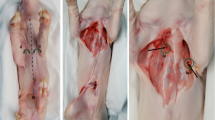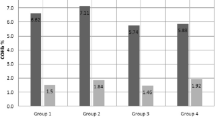Abstract
Cyanide (CN) blood concentration is hardly considered during routine when evaluating smoke gas intoxications and fire victims, although some inflammable materials release a considerable amount of hydrogen cyanide. CN can be significant for the capacity to act and can in the end even be the cause of death. Systematic data concerning the influence of different fire conditions, especially those of various inflammable materials, on the CN-blood concentration of deceased persons do not exist. This study measured the CN level in 92 blood samples of corpses. All persons concerned were found dead in connection with fires and/or smoke gases. At the same time, the carboxyhemoglobin (COHb) level was determined, and the corpses were examined to detect pharmaceutical substances, alcohol and drugs. Furthermore, we analysed autopsy findings and the investigation files to determine the inflammable materials and other circumstances of the fires. Due to the inflammable materials, the highest concentration of CN in the victims was found after enclosed-space fires (n = 45) and after motor-vehicle fires (n = 8). The CN levels in these two groups (n = 53) were in 47 % of the cases toxic and in 13 % of the cases lethal. In victims of charcoal grills (n = 17) and exhaust gases (n = 6), no or only traces of CN were found. Only one case of the self-immolations (n = 12) displayed a toxic CN level. The results show that CN can have considerable significance when evaluating action ability and cause of death with enclosed-space fires and with motor-vehicle fires.





Similar content being viewed by others
References
Mierley MC, Baker SP (1983) Fatal house fires in an urban population. JAMA 249:1466–1468
Karter MJ Jr (1986) Fire loss in the United States during 1985. Fire J 80:26–65
Loke J, Matthay RA, Smith GJW (1988) The toxic environment and its medical implications with special emphasis on smoke inhalation. In: Loke J (ed) Pathophysiology and treatment of inhalation injuries. Marcel Dekker, New York, pp 453–504
Barillo DJ (2009) Diagnosis and treatment of cyanide toxicity. J Burn Care Res 30(1):148–152
Hull TR, Stec AA, Lebek K, Price D (2007) Factors affecting the combustion toxicity of polymeric materials. Polym Degrad Stab 92:2239–2246
Alarie Y (2002) Toxicity of fire smoke. Crit Rev Toxicol 32(4):259–289
Blomqvist P, Lönnermark A (2001) Characterization of the combustion products in large-scale fire tests: comparison of three experimental configurations. Fire Mater 25:71–81
Baud FJ (2009) Akute Vergiftungen mit Kohlenmonoxid und Zyaniden. Ther Umsch 66:387–397 (in German)
Terrill JB, Montgomery RR, Reinhardt CF (1978) Toxic gases from fires. Science 200:1343–1347
Koschel MJ (2002) Where there’s smoke, there may be cyanide. AJN 102(8):39–42
Geldner G, Koch EM, Gottwald-Hostalek U, Baud F, Burillo G, Fauville JP et al (2013) Report on a study of fires with smoke gas development. Anaesthesist 62:609–616
Anseeuw K, Delvau N, Burillo-Putze G, De Iaco F, Geldner G, Holmström P et al (2013) Cyanide poisoning by fire smoke inhalation: a European expert consensus. Eur J Emerg Med 20(1):2–9
Noguchi TT, Eng JJ, Klatt EC (1988) Significance of cyanide in medicolegal investigations involving fires. Am J Forensic Med Path 9(4):304–309
Grabowska T, Skowronek R, Nowicka J, Sybirska H (2012) Prevalence of hydrogen cyanide and carboxyhaemoglobin in victims of smoke inhalation during enclosed-space fires: a combined toxicological risk. Clin Toxicol 50:759–763
Borron SW (2006) Recognition and treatment of acute cyanide poisoning. J Emerg Nurs 32(4 suppl):S11–S18
Deslauriers CA, Burda AM, Whal M (2006) Hydroxycobalamin as a cyanide antidote. Am J Ther 13(2):161–165
Stewart R (1974) Cyanide poisoning. Clin Toxicol 7(5):561–564
Baud FJ (2007) Cyanide: critical issues in diagnosis and treatment. Hum Exp Toxicol 26:191–201
Barillo DJ, Goode R, Esch V (1994) Cyanide poisoning in victims of fire: analysis of 364 cases and review of the literature. J Burn Care Rehabil 15:46–57
Levine B, D’Nicuola J, Kunsman G, Smith M, Stahl C (1996) Methodologic considerations in the interpretation of postmortem carboxyhemoglobin concentrations. Toxicology 115:129–134
Gerling I, Meissner C, Reiter A, Oehmichen M (2001) Death from thermal effects and burns. Forensic Sci Int 115:33–41
Asmus E, Garschagen H (1953) Über die Verwendung der Barbitursäure für die photometrische Bestimmung von Cyanid und Rhodanid. Z Anal Chem 138:414–422 (in German)
Feldstein L, Klendshoj NC (1954) The determination of cyanide in biological fluids by microdiffusion analysis. J Lab Clin Med 44:166–170
Stoll S, Krüger S, Roider G, Kraus S, Keil W (2016) Hydrogen cyanide in fire tests - forensic aspects. Rechtsmedizin. DOI 10.1007/s00194-016-0090-5
Yeoh MJ, Braitberg G (2004) Carbon monoxide and cyanide poisoning in fire related deaths in Victoria, Australia. J Toxicol Clin Toxicol 42(6):855–863
Yoshida M, Adachi J, Watabiki T, Tatsuno Y, Ishida N (1991) A study on house fire victims: age, carboxyhemoglobin, hydrogen cyanide and hemolysis. Forensic Sci Int 52:13–20
Baud FJ, Barriot P, Toffis V, Riou B, Vicaut E, Lecarpentier Y et al (1991) Elevated blood cyanide concentrations in victims of smoke inhalation. N Eng J Med 325:1761–1766
Runyan CW, Bangdiwala SI, Linzer MA, Sacks JJ, Butts J (1992) Risk factors for fatal residential fires. N Eng J Med 327(12):859–863
Barillo DJ, Goode R (1996) Fire fatality study: demographics of fire victims. Burns 22:85–88
Barillo DJ, Goode R (1996) Substance abuse in victims of fire. J Burn Care Rehabil 17:71–76
Gulaid JA, Sacks JJ, Sattin RW (1989) Deaths from residential fires among older people, United States, 1984. J Am Geriatr Soc 37(4):331–334
Bohnert M, Werner CR, Pollak S (2003) Problems associated with the diagnosis of vitality in burned bodies. Forensic Sci Int 135:197–205
Pohl KD (1989) Der Kraftfahrzeugbrand. DAT, Stuttgart (in German)
Bohnert M (2007) Kraftfahrzeugbrand. Rechtsmedizin 17:175–186, (in German)
Author information
Authors and Affiliations
Corresponding author
Rights and permissions
About this article
Cite this article
Stoll, S., Roider, G. & Keil, W. Concentrations of cyanide in blood samples of corpses after smoke inhalation of varying origin. Int J Legal Med 131, 123–129 (2017). https://doi.org/10.1007/s00414-016-1426-0
Received:
Accepted:
Published:
Issue Date:
DOI: https://doi.org/10.1007/s00414-016-1426-0




